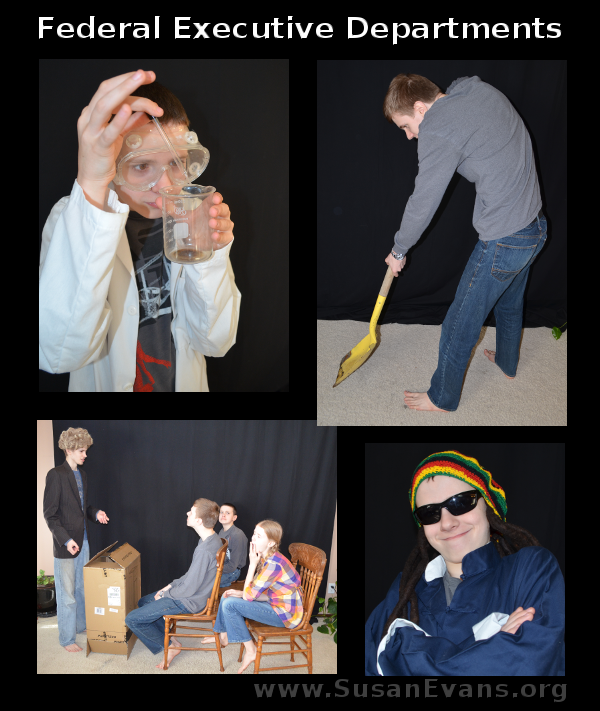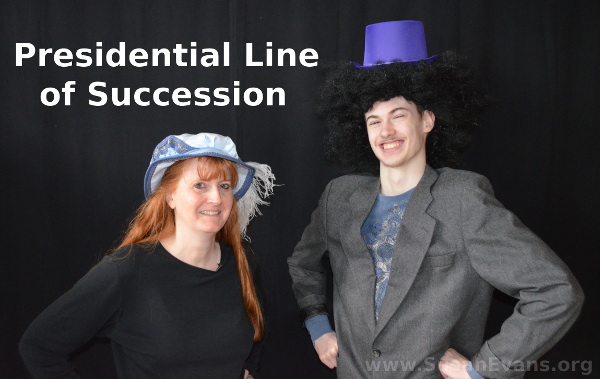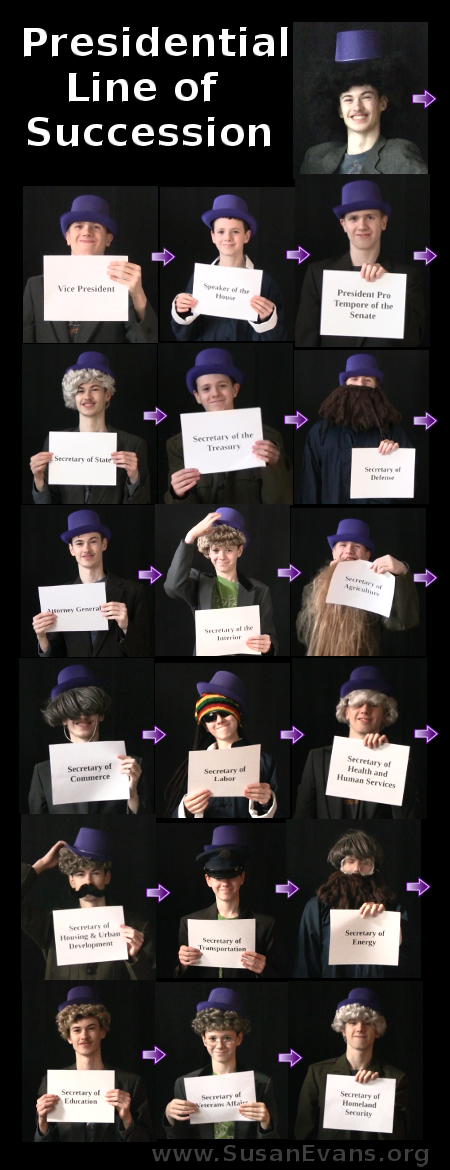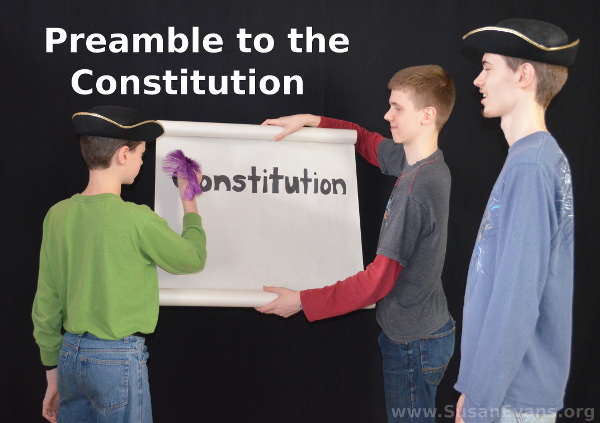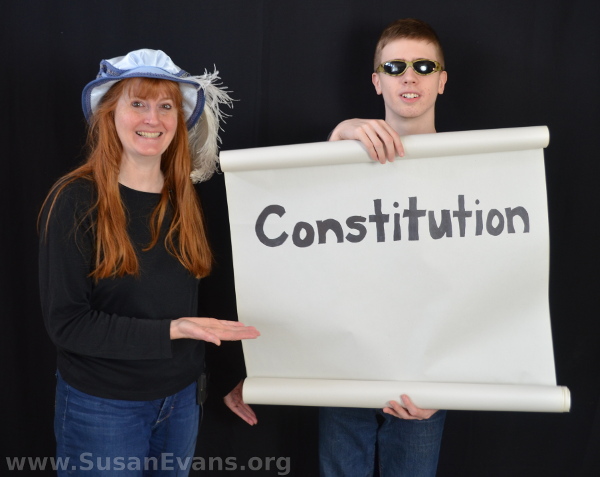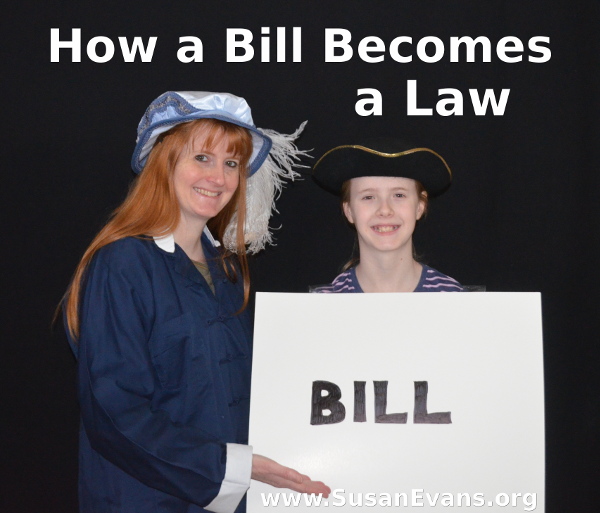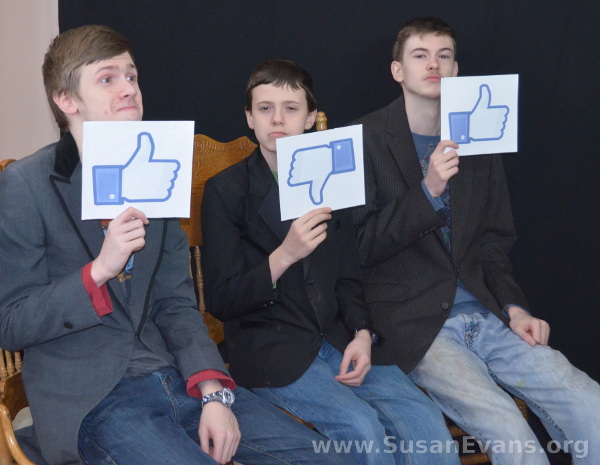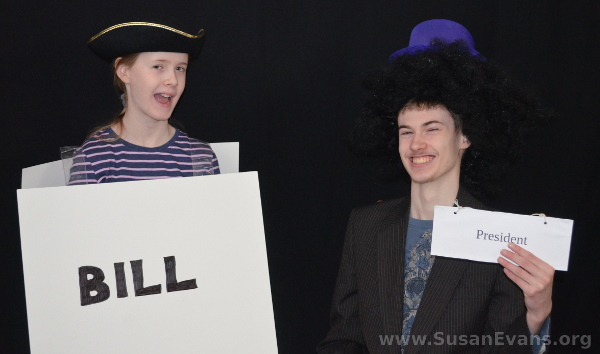What are the federal executive departments of the United States government? Today we will find out through a series of skits!
We have been using the book Exploring Government by Ray Notgrass for our study of high school government, and we find out that the President’s cabinet members are each in charge of different executive departments. We found out in last week’s episode what the line of succession is for President. Now we will describe each department of the federal government.
The group of people directly under the President is the executive department. (The legislative and judicial departments are the other two branches of government, and these two keep the executive department in check.)
Federal Executive Departments of the U.S. Government
The first executive department is the Department of State. This handles foreign relations and makes treaties, promotes peace, and encourages countries to participate in the war on terrorism, among other things.
Next is the Department of the Treasury, which oversees the economic life of the nation and is involved in how the country participates in the global economy. It also oversees coin minting, printing of paper currency, and the IRS.
Third, the Department of Defense has the job of protecting our nation and its interests. This is our nation’s largest employer, with about 1.4 million men and women on active duty, and 650,000 civilian employees to support them.
Next, we have the Department of Justice, the head of which is the Attorney General. This department works with the FBI and enforces laws of all kinds.
Then there is the Department of the Interior, also referred to as the department of everything else by some people. This department’s responsibilities used to include a lot of agencies that became their own departments later. Now its primary responsibility is to maintain federal national parks.
The Department of Agriculture creates regulations concerning the quality of food farmers produce, inspects and grades food, supervises farm production, and guarantees that farmers get an adequate income through subsidies and price controls.
Next, the Department of Commerce encourages growth in the economy and promotes trade between American and foreign companies. This department includes the United States Patent and Trademark office, among others.
The Department of Labor‘s job is to protect the rights of American workers by enforcing laws regarding non-discrimination and safety in the workplace. This department also collects information about various aspects of worker conditions such as hourly wage and the unemployment rate.
Next is the Department of Housing and Urban Development. It was created to address the decaying state of many inner city areas and the dilapidated, crime-infested urban areas. It also enforces laws regarding discrimination and safety in apartments.
The Department of Transportation allocates federal funds to road construction and promotes safety in construction sites. It also oversees the transportation infrastructure and makes regulations regarding road safety.
The Department of Health and Human Services has a wide range of tasks from medicare and medicaid, to approving prescription drugs, to certifying the quality of foods and cosmetics sold in America, and much more. It also creates programs to help Native American tribes, the poor, and the elderly.
Next, the Department of Energy encourages energy conservation and supports research in energy technology. It tries to make energy consumption and production safer and researches alternate renewable sources of energy.
The Department of Education has over 250 programs including training migrant workers, programs for the handicapped, and granting student loans. It also works to prohibit discrimination in schools.
The Department of Veteran’s Affairs is tasked with providing assistance to veterans, especially those with disabilities because of their service. This department provides health care to veterans and their dependents at little or no cost.
And last, but not least, we have the Department of Homeland Security, which handles national emergencies such as natural disasters. It works to prevent terrorist attacks and makes programs to keep the public educated about such attacks. (In the skit, the blue blanket was a tsunami, in case you couldn’t figure it out!)
And there you have it… the Federal Executive Departments of the U.S. Government!
The links in this series of blog posts are not affiliate links. Please buy the book from their website to bless their family the most!
